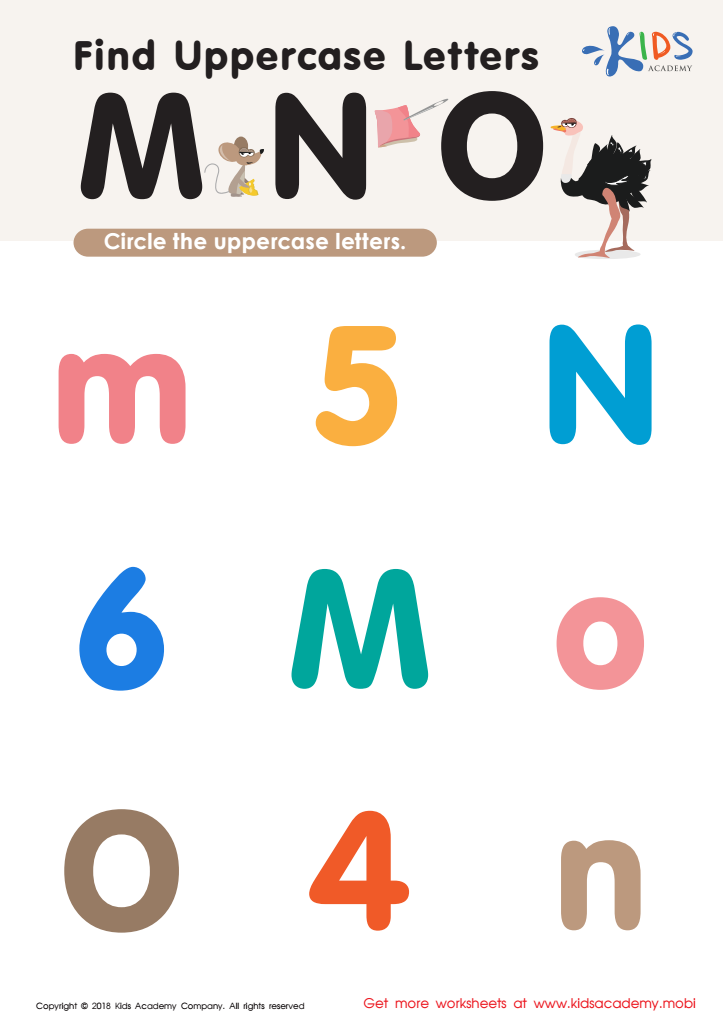Uppercase identification Normal Letter Recognition Worksheets
5 filtered results
-
From - To
Enhance your child's literacy skills with our Uppercase Identification Normal Letter Recognition Worksheets! These engaging and interactive worksheets are specifically designed to help young learners easily recognize and differentiate uppercase letters. With a variety of activities, including tracing, coloring, and matching exercises, children will develop their letter identification skills in a fun and effective way. Perfect for preschool and early grade teachers, these worksheets cater to diverse learning paces and styles. Foster a strong foundation in early literacy with our printable resources, ensuring your little ones are prepared for reading success. Start their alphabet adventure today with Kids Academy's engaging materials!


Find Uppercase Letters Worksheet


Find Uppercase Letters J, K, and L Worksheet


Find Uppercase Letters A, B, and C Worksheet


Find Uppercase Letters V, W, X Worksheet


Find Uppercase Letters M, N, and O Worksheet
Uppercase letter recognition is a crucial component of early literacy development, making it essential for parents and teachers to prioritize this skill. Understanding uppercase letters is the foundation for reading and writing, as they often appear in texts, signs, and various forms of communication. Before children can progress to lowercase letter recognition, they first need to identify and differentiate uppercase letters, which serve as essential building blocks for phonetic awareness.
Uppercase letters play a vital role in early language skills because they frequently denote the beginning of sentences and proper nouns. By teaching children to recognize these letters, parents and teachers can foster a sense of confidence and familiarity with written language. This recognition aids in vocabulary acquisition and comprehension, which lays the groundwork for effective communication skills.
Additionally, uppercase letter identification boosts phonemic awareness, supporting reading fluency and writing development. It also facilitates transitions into spelling patterns and letter pairing, both of which are fundamental as children advance in their literacy journey. Ultimately, by correlating uppercase letter recognition with personal and engaging activities, parents and teachers can create a rich literacy environment that nurtures a lifelong love of reading and writing.
 Assign to My Students
Assign to My Students
















